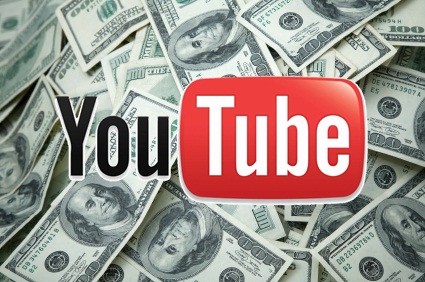How to earn money from YouTube
YouTube began in early 2005 and has grown rapidly. Every minute, people around the world upload more than 300 hours' worth of video footage to YouTube.
YouTube has the second-largest search engine in the world, behind Google (which owns YouTube). This means people are constantly searching for information using YouTube and discovering videos relating to these topics.
YouTube is a free to use service and a can be a great space for teens to discover things they like. For many young people, YouTube is used to watch music videos, comedy shows, how to guides, recipes, hacks and more. Teens also use the video-sharing service to follow their favorite bloggers (video blogger), subscribe to other YouTube's and celebrities they are interested in.
YouTube was originally created as a platform for anyone to post any video content they desired. It was hoped that users could use the site to upload, share, and view content without restriction.
It has since grown to become one of the foremost video distribution sites in the world. Today, many content creators make a decent living by selling ad space before or on videos they create and upload onto the site.
YouTube Videos:
YouTube provides a simple way for people to store videos online and share them with others. YouTube videos cover any topic anyone cares to upload a video about. These videos are easy to share via other forms of social media, email and websites and can also be embedded in other websites.
Beside every video on YouTube is a list of 'suggested videos' - videos that YouTube's search engine calculates are likely to interest people who watch the video you are watching.
YouTube Advertising:
YouTube incorporates features that let businesses promote their videos to people who might be interested in them, targeting customers by demographics, topics or interests.
Advertisers pay each time someone views their video. You can choose which locations your ad will appear in, what format it will be, and even how much you are prepared to pay per view (if you want to boost the prominence of your ad over your competitors). YouTube's advertising guide explains how it works.
How to Earn Money on YouTube?
Making money from YouTube used to be as simple as uploading great content, garnering millions of views, and earning a share of advertising revenue. Now, content creators have access to multiple ways to monetize their content. In addition to advertising, this can include corporate sponsorship from a major brand, fan funding or merchandise sales.
- Content creators can join the YouTube Partner program after accumulating 1,000 subscribers and 4,000 hours of watch time.
- This gives creators access to monetization features such as advertising, fan funding and merchandise sales.
- Top YouTube stars make close to $20 million a year. However, most make far less or nothing at all.
How Does YouTube Pay You?
YouTube determines how much you get paid for your videos through "Cost per Impression" or CPI. Whenever someone watches an ad on your video, your CPI increases. Your CPI usually increases every 1,000 views you get on the video.
CPI itself is determined based on different algorithms and other factors like the types of ads displayed on your video, ad prices, the channel's target audience and popularity etc. It typically ranges from a few cents to as much as $10. On average you make around $1-$2 per 1,000 views.
After Monetization has been enabled and your channel has been associated with your AdSense account, you will begin receiving payments. When you set up your AdSense account, you will be asked for a payment threshold. Once your balance exceeds the payment threshold ($100), you will be paid by AdSense.
There are 5 ways to receive payments from AdSense. This includes:
- Electronic Funds Transfer (EFT).
- Check.
- Western Union Quick Cash.
- Wire Transfer.
- Rapid.
You will receive payments on a monthly basis, with your estimated earnings for the previous month tallied under the "Transactions" page on AdSense.
For example, your earnings for June will be tallied and shown to you on July 3rd. After that you will be paid in lump sum by July 21st, depending on the payment method you choose.
